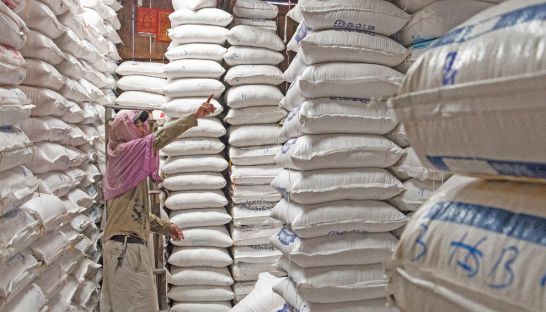Strong dollar casts worries for farm exports
Strong dollar casts worries for farm exports
It’s no secret that Cambodia is a highly dollarised country, with certain estimates suggesting a more than 80 per cent penetration of the greenback. A large section of FDI and the urban economy in the Kingdom is fuelled by the US dollar, with little indication that things are going to change soon.

While economists believe that the current dollar rally, which started in late 2013, may not accelerate at the pace it has in the past 18 months, it is expected to continue to strengthen this year. The dollar has seen a 15 per cent appreciation against a basket of foreign currencies, including the euro and yen, in the past six months, with only the euro showing some resilience in the past few days.
Cambodia, while expected to be largely unaffected in the short term, could see some downsides to this trend in the long run.
Grant Knuckey, CEO of ANZ Royal, said that the country will be shielded from this appreciation in some respects, but there can be pressure on agricultural exports, especially to Europe, because a depreciating euro will make exports costlier to the economic bloc.
“For exports to Europe – mainly rice and garments – there can be an impact, although the effect may be lagged depending on the term of the export contract,” said Knuckey.
He added that another problem area could be tourism, where depreciation in local currencies makes it more expensive for European and Asian travellers, who currently make up the bulk of tourists to the Kingdom.
This decrease in export competitiveness also poses a future risk to garments, which account for around 70 per cent of outbound shipments, said Hana Becickova, senior economist for the Mekong region at Mantis BV, a risk quantification and forecasting firm in the Netherlands.
Nations like Thailand and Vietnam, whose currencies are floated, have the option of adjusting their currencies through monetary tools, where as Cambodia cannot because it is so strongly pegged to the US dollar.
According to Becickova, the wage hike last year was a “good thing”, but given the current economic situation, it puts added pressure on Cambodia’s competitiveness, particularly when the Kingdom is unable to use monetary policy to mitigate the rising cost of exports.
“Cambodia currently has really a higher wage level, in nominal terms, compared to other garment manufacturers within the region,” she said. “Garment wages is not the only thing that matters for garment investors. When we look at electricity prices, Cambodia is one of the costlier countries in terms of electricity. So again this is something not really favourable for the garment sector,” Becickova added.
On the upside, Cambodia will not have to grapple with local currency depreciation, asset volatility and higher priced imports, given that the country is a net importer.
Hiroshi Suzuki, CEO at the Business Research Institute for Cambodia, said one unintended benefit is repayment of loans made in other currencies, because an appreciation in the dollar makes these repayment amounts smaller.
“In case of Japanese ODA loans, Cambodian government could enjoy big savings in the repayment amount in US dollar because all the loans are denominated in Japanese yen and the yen has been depreciated around 40 per cent within the two years,” Suzuki said.
Looking at the region, Suzuki feels that Asian economies are better prepared this time around to deal with a cyclical dollar appreciation, with Japan enjoying increased export competitiveness and better returns on overseas investment.
“Many ASEAN countries have not been affected so much because they are mainly using US dollar for the foreign trade currency,” said Suzuki.
While the eurozone and Japan have extended quantitative easing, and other nations are exercising the option of adjusting their currencies to maintain competitiveness, these options are not available to Cambodia. With the high rate of dollarisation, Cambodia has little control over its monetary policy and has to rely on the US Federal Reserve to set the dollar’s path.
In the past, the government and National Bank of Cambodia have spoken of carrying out de-dollarisation, but the process has been slow and piecemeal.
Mey Kalyan, senior adviser to the Supreme National Economic Council, said that the government has a policy for de-dollarisation, but it hasn’t been implemented fast enough.
He added that as the economy gets stronger the government will have to grapple with the right amount of regulatory touch it needs to put in place, while still maintaining free-market principles.
“I think looking back, using the dollar was good for stability – macro stability. But now it is time to de-dollarise as the economy gets stronger and bigger. The problem is not so much about growth anymore,” Kalyan said.
He added that Cambodia needs to address this issue with an action plan that moves towards greater local monetary control. “It’s like flying a plane with one engine. If the engine is off it can go down,” he said.















